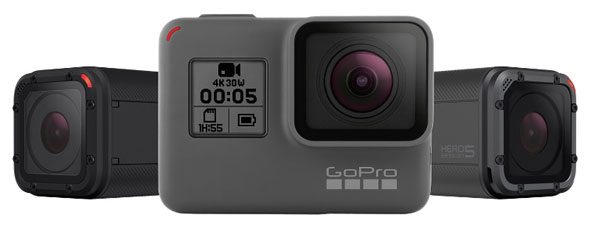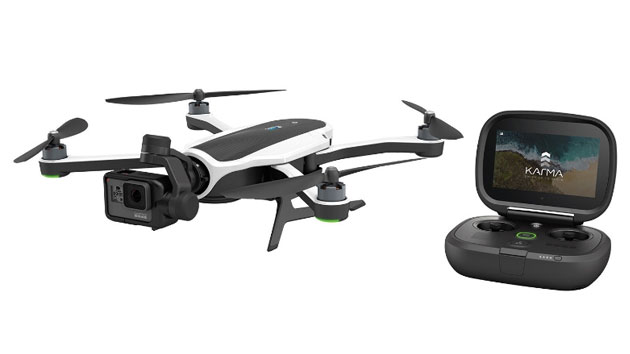New Hero5 Cameras Are Waterproof to 33 Feet, Now Have Digital Image Stabilization Built In
GoPro finally announced its own drone today with the unveiling of Karma, an $800 quadcopter (GoPro camera sold separately) designed to fit in a backpack.
Karma comes with a videogame-style twin joystick controller with a fold-up touch display, eliminating the need for using a separate device to get POV video from the flying device. The drone ships with a three-axis camera stabilizer that can be removed from the drone and used handheld or mounted via the included Karma Grip, which has built-in camera controls — a nice value-add for users who won't be shooting from the air all day long.
The drone has replaceable arms and landing gear, a removable battery, a folding design for portability, and a camera view unobstructed by rotor blades.
Like the company's 4K cameras, GoPro's drone is designed for absolute simplicity of operation, though it has powerful features too, including autonomous flight paths (GoPro calls them "auto shot paths") and the ability to add a second "passenger" operator dedicated to the camera. That should help it make inroads against competitors DJI and Yuneec in the high-end hobbyist and prosumer space.
Here's GoPro's marketing video for the Karma, which is scheduled to ship October 23.

GoPro also announced its new flagship action camera, the Hero5 Black ($399), along with the much more compact Hero5 Session ($299). Both new cameras are waterproof to 33 feet (10m) without a separate housing and now feature electronic video stabilization. Like the existing Hero4 Black, both new cameras shoot 4K video at 30fps. The two Hero5 models are set to ship October 2.
Also launching October 2 is GoPro Plus, a subscription service ($4.99/month) that allows the Hero5 cameras to automatically upload photos and videos to the cloud for access elsewhere while charging. (Earlier camera models can upload to the cloud via desktop application.)
GoPro is hoping the Karma — originally slated for release in the first half of the year — will help reinvigorate its business, which has been deep in the doldrums since the company's stock price peaked in September 2014, three months after its IPO. The company's shares were trading at just over $15 on Monday afternoon following the announcement, after dipping below $9 in May.
GoPro: www.gopro.com
Did you enjoy this article? Sign up to receive the StudioDaily Fix eletter containing the latest stories, including news, videos, interviews, reviews and more.










Leave a Reply